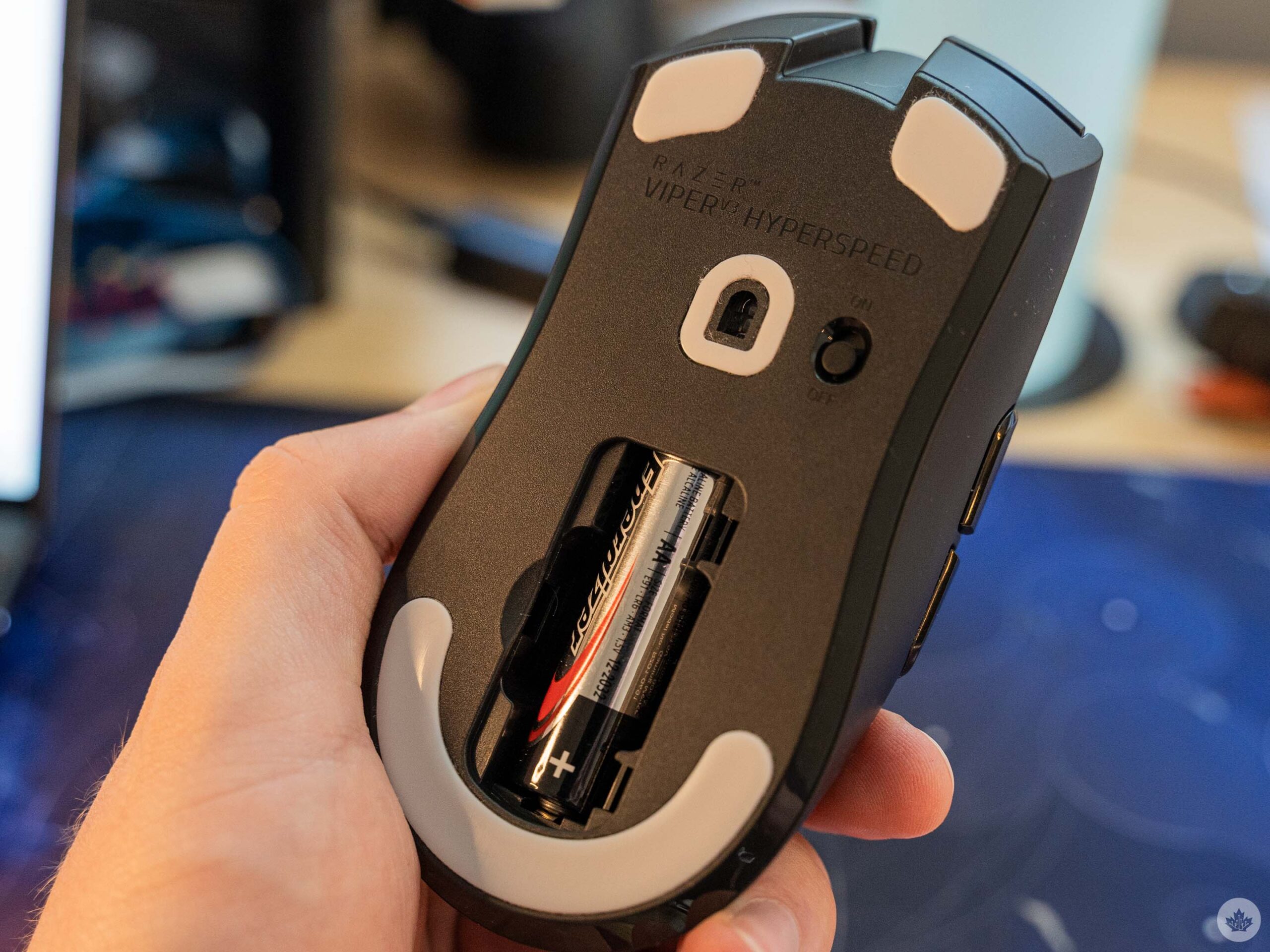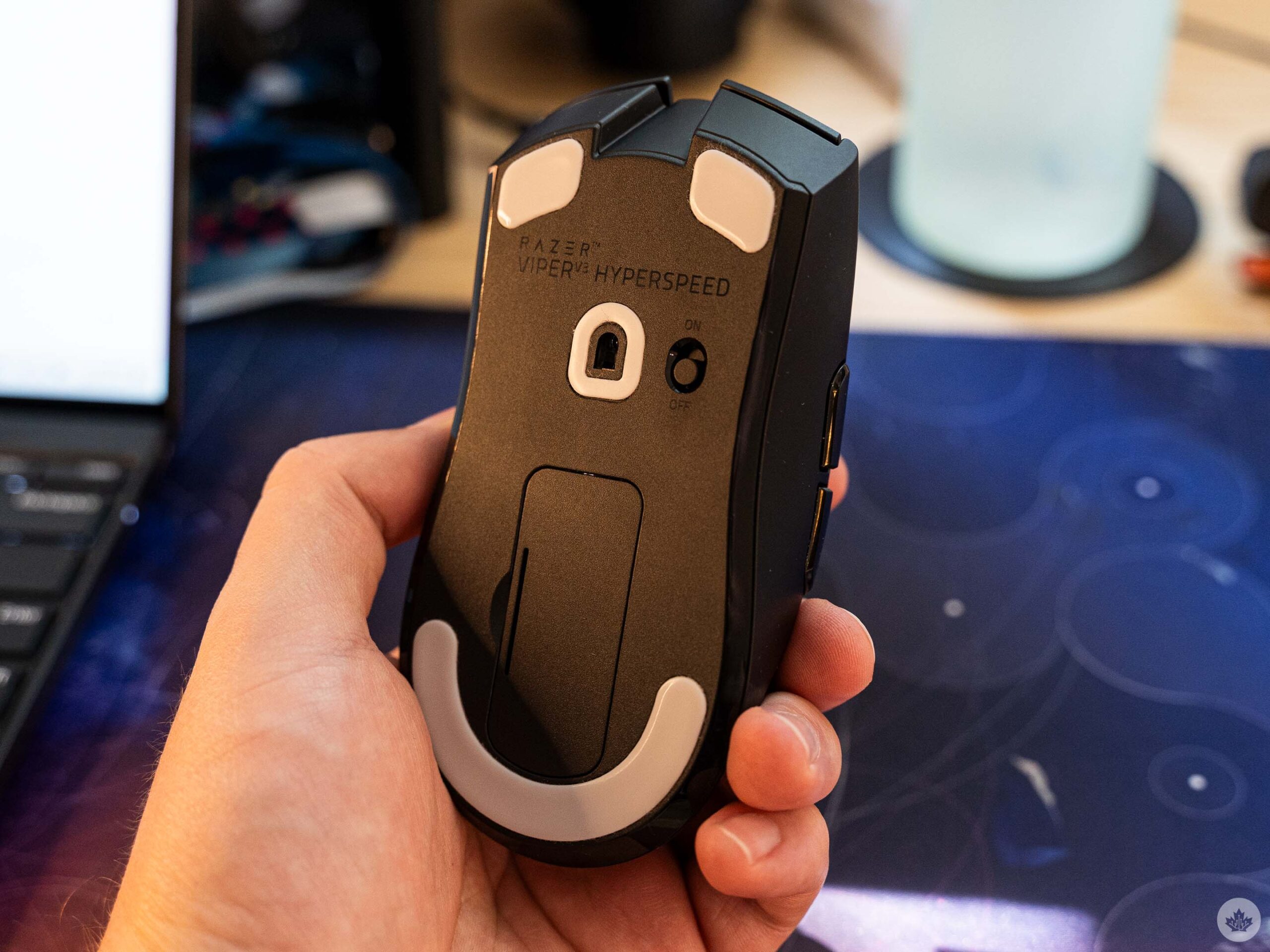
Razer’s new Viper V3 Hyperspeed PC gaming mouse is frankly excellent, especially if you’re looking for a mouse that does the basics well without superfluous add-ons.
Starting at $99.99 in Canada, the Viper V3 Hyperspeed might look like a boring, average mouse, and, well, that’s because it is. But for what it lacks in external styling, it makes up for in dependability. Sure, there’s no RGB — what has the world come to? — but Razer claims it has a whopping 280-hour battery life powered by a single AA battery.
That number alone was enough to impress me, and so far in my testing, the battery has proved endless. 280 hours works out to about 11 and a half days of straight use. While I’ve had the Viper V3 Hyperspeed for longer than that, I haven’t had to swap out the included AA battery yet. In fact, Razer’s Synapse software indicates the battery is still around 60 percent, though Synapse won’t give me an exact percentage, and I have to guestimate from the battery icon. Still, it’s impressive.
But while the battery might have piqued my interest, there’s a lot more to the Viper V3 Hyperspeed. Razer’s marketing around the mouse pushes it as an entry option for competitive or pro gamers. Razer says it even consulted with pros to tweak the Viper V3 Hyperspeed’s design to be even better for gamers. That includes adding a subtle ledge to the edge of the buttons to prevent finger pinching, adjusting the sidewalls to better work for varying grip styles, slightly raising the mouse’s hump and shifting it back for better comfort, and more.
I’m certainly not a pro gamer by any stretch, but I did find the Viper V3 to be quite comfortable. For the record, I’ve never pinched my fingers with a mouse, so I’m not sure how much of an improvement the Viper brings in that regard. That said, those who do pinch their fingers may want to try out a Viper V3 Hyperspeed to see if it helps.
There are a few other factors that contribute to comfort. For one, the Viper V3 Hyperspeed has a mass-centralized design, which helps with the mouse’s balance. But more noticeable to me was the excellent smooth-touch finish. It’s easily one of my favourite finishes for a mouse, including past Razer mice I’ve tried.
While those were the standout features for me, there are a few other things worth noting about the Viper V3 Hyperspeed. It sports Razer’s second-gen mechanical mouse switches for a satisfying tactile click and a lifespan of 60 million clicks. It has support for smart tracking that automatically calibrates the Focus Pro sensor for whatever surface you’re using the mouse on. The mouse also supports up to 1,000Hz polling, though that can be pushed to 4,000Hz if you use Razer’s HyperPolling Wireless Dongle, which is sold separately. It also takes a toll on your battery, with the dongle and 4,000Hz dropping the Viper V3 Pro’s battery estimate to 75 hours. Oof.
The Viper V3 Hyperspeed is also fairly light. The mouse itself weighs 59g, but with the battery, it jumps up to 82g. It’s not the lightest gaming mouse out there, but generally, I find anything under 100g to feel pretty good.
Ultimately, the Viper V3 Hyperspeed offers solid performance and comfort without extra bells and whistles, like RGB. While the lack of RGB might kill the Viper V3 for some, its focus on performance will likely offset that. Moreover, at $99.99 in Canada, it’s on the cheaper end of gaming gear, though not necessarily cheap. If you want the HyperPolling dongle, you’ll need to fork out a little more — Razer sells a combo with the mouse and dongle for $166.97 CAD, though at the time of writing, it was on sale for $119.99.
MobileSyrup utilizes affiliate partnerships. These partnerships do not influence our editorial content, though MobileSyrup may earn a commission on purchases made via these links.
MobileSyrup may earn a commission from purchases made via our links, which helps fund the journalism we provide free on our website. These links do not influence our editorial content. Support us here.





